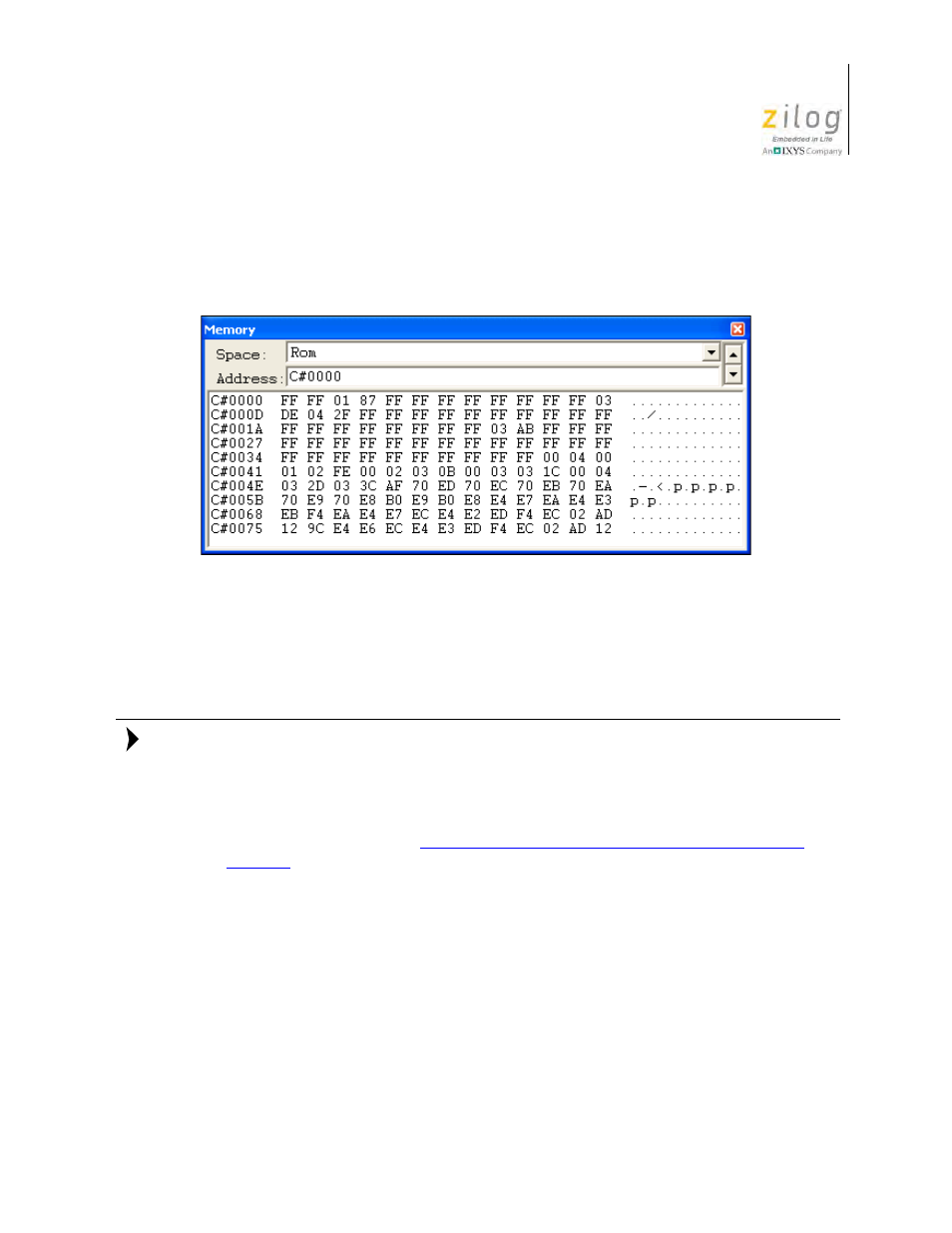Memory window, Figure 146. memory window – Zilog Z8F0130 User Manual
Page 415

UM013037-1212
Memory Window
Zilog Developer Studio II – Z8 Encore!
User Manual
391
Memory Window
Click the
Memory Window
button to open one of ten memory windows.
Each memory window displays data located in the target’s memory. The ASCII text for
memory values is shown in the last column. The address is displayed in the far left column
with a C# to denote the code address space, with an R# to denote the RData address space,
or with an N# to denote the NVDS address space.
For RData, the
Memory
window shows the internal data memory in its entirety.
The Z8 Encore! XP F082A Series and non-24K F1680 devices contain a Nonvolatile Data
Storage (NVDS) element with a size of up to 128 bytes. This memory features an endur-
ance of 100,000 write cycles. For more information about NVDS, see the Nonvolatile
Data Storage chapter of the
.
The Z8 Encore! XP F1680 Series devices feature an area of Program RAM that can be
used for storing some code in RAM. This area can be used to help keep device operating
power low by, for example, storing interrupt service routines here that would activate the
code in Flash memory when some external event has occurred. PRAM, when available, is
an optional feature. If you want to use this memory as Program RAM, set the desired
address range in the
PRAM
field in the
Address Spaces
page of the
Project Settings
dialog box. PRAM begins at data address
E000
and can have a maximum size of 512 or
1024 bytes, depending on your device. If you deselect the
PRAM
checkbox, this memory
is not available to the compiler. Also, the compiler does not know if this memory is recon-
figured as additional Register RAM memory without the user expanding the Linker
Address EData range as described below.
Figure 146. Memory Window
Notes: